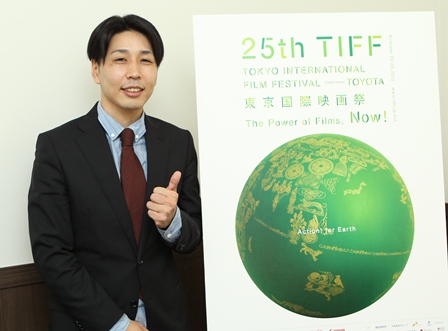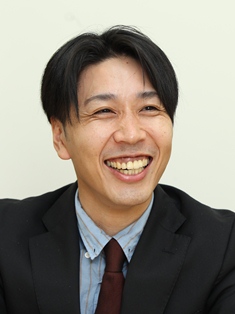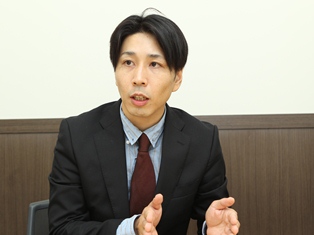Interview with Director Daisuke Shimote (“KURO”)

KURO’s lightness belies the deep cinematic intelligence that Daisuke Shimote brings to it. It’s a joyful jaunt with a set of 20-somethings that says a lot about contemporary Japan through its nods to the cinematic masterpieces that inspired it.
— This is your first feature film?
Daisuke Shimote: Yes.
— But have you made other films before? Short films?
Shimote: No.
— I understand that you’ve done research about Yasujiro Ozu. Could you tell me what sort of research work you did?
Shimote: Since “Late Spring” on, Yasujiro Ozu worked with a scriptwriter by the name of Kogo Noda. That marked a change in Ozu’s style somewhat. Ozu started off as an assistant cinematographer. He would frame the shot. Noda would take care of the script, based on his understanding of what Ozu would like to do in whatever scene. With “Tokyo Story” you could see the influence of the American director, Leo McCarey. There’s some commonality between Leo McCarey’s and Ozu’s works. What I researched about was how take from their styles and come up with my own style by learning from them – how to modify what I cherish about their work.
— You have Ozu and McCarey as influences. What do you get from Leo McCarey?
Shimote: Well I’m not sure if I learned if… I’m not sure if this was from Leo McCarey. Probably not, but something in common between Ozu and McCarey’s work is that their films aren’t overly dramatic at all. They say Ozu’s films often deal with the collapsing of the family, but I don’t think so, personally. I believe, depending upon the viewer’s age, what you get from Ozu’s films differs a lot. If you’re a twenty-year old, you may not find a certain film interesting, but say, with “Tokyo Story” you get an old couple with a child and the rest of the family. If you’re 20 you may not be able to understand it. But, if you’re much older, you will get something out of it. It really depends on your age.
— Apart from Ozu, I see Godard in your film. I see a lot of Godard. Would you like to talk about the influences of Godard and the New Wave filmmakers on KURO?
Shimote: What I get from the New Wave and Godard is the delight in showing people with very free spirits. Those kinds of people I find captivating. I wanted to show that through the character of Kuro.
— So, she looks like Anna Karina.
Shimote: Yes.
— And she does some scenes right out of “Vivre sa vie” and other Godard films. She’s the Godard character.
Shimote: Yes, she’s like Anne Wiazemsky and Anna Karina.
— Both?
Shimote: Yes.
— And even the scenes when they’re in the hotel, they have a light, kind of New Wave style. In effect, it reminds me of Godard and maybe a little bit of Truffaut going on in there.
Shimote: In one of the first scenes – I don’t know if you remember – Gou, the scriptwriter gets offered all kinds of different guns and hats by the assistant, saying “How about this one. How about that one.” I used that scene from “La nuit americaine” by Truffaut. But I didn’t have enough funds to have as many people as Truffaut did.
— When I saw the film, I thought of a famous Godard quote. “All you need for a movie is a gun and a girl.”
Shimote: In the case of Ozu’s films all you need is a low table and a father and a daughter. Whereas Jean-Pierre Melville said “All you need for a film is love, friendship and deceit.”
— Kuro is like Anna Karina. Is Gou influenced by old cinema? By his looks and style… or is he an original character?
Shimote: I was thinking of Woody Allen’s films.
— His clothes, even though their modern style, make him look a little like a clown.
Shimote: I also had Buster Keaton in mind.
— Then there’s the third character, the photographer. His story is more of a traditional breakup of a couple. He doesn’t get involved in the more unrealistic, more fantastic, metacinematic things that happen in the film, too much.
Shimote: Well, in cinema, you need a third eye. Through that person’s reaction the audience knows how to view the characters on the screen. I wanted that photographer to be that medium, so to speak. He, as you noticed, always stays kind of cool. This film was made with a digital camera. In old films, and of course with the camera that the photographer uses, when the shutter closes, the film gets exposed. There are 24 frames and 48 turns of the shutter. That means when something is being shot… in that particular moment the audience isn’t seeing anything. Right? Intentionally the photographer takes pictures without seeing the object – although he sets the frame. He can’t see anything until the film is developed in the darkroom. Likewise, the same can be said about film. That was the metaphor I wanted to convey, although, I must admit, I didn’t convey that at all. (laughs)

— The film has many humorous scenes. I strikes me that one your intents is to explore film comedy… how to make comedy specific to film. KURO reminded me of Frank Tashlin, Jerry Lewis, Godard. Instead of maybe straightforward slapstick or jokes, the jokes are more metacinematic. They’re built around the act of making a movie. Tell me about some of your ideas about film comedy and what you’re exploring there.
Shimote: “The Nutty Professor,” for example is something that I had in mind, and Preston Sturges and Ernst Lubitsch. In Gou’s last scene… I’m not sure if it was successful or not… I had in mind some scenes from “To Be or Not To Be.”
— I particularly like the scene where they’re doing the game that starts of with pantomime, then you add the soundtrack so it has a reality that’s outside of reality. It has a cinematic reality. And that reminds me particularly of something that Godard would do. Or even Jerry Lewis.
Shimote: Thanks.
— Nice stuff.
Shimote: Well, the comments I get on twitter was that some people almost fell asleep.
— I think that when people think of festival films they want something heavy.
Shimote: Talking about heavy films, film festivals now have lots of films on the earthquake and tsunami, the disaster. I shot a documentary a week after the disaster, where the tsunami devastated the coastal area. I wanted to kind of shoot google street views of the devastated area, so I put a camera on my car and I drove 30 kilometers and I just shot what I saw. Of course, everywhere I looked it was a terrible disaster. But I was surprised by finding someone walking his dog early in the morning amidst the rubble. That really surprised me. I thought maybe people’s habits don’t change that much regardless of what happens. And maybe that person needed to keep up with his habits in order to manage his life. What I wanted to show in the last scenes (of “KURO”) was something like that. That all of them went back to their former lives more or less, having changed a little bit and now ready to stand up on their own feet. After that period of spending time together, the three of them, all of them have changed a little bit. In the case of Kuro, she now cleans the counter or something. And she’s a better woman, a little bit. And I think that little change is enough. You can’t change dramatically over a short period of time, but by repeating such changes, little by little, one can change and grow. That’s what I wanted to show.

— How does Gou change? It seems like he’s back with his not-very-nice girlfriend.
Shimote: Gou has changed so now he can accept being whipped by a bouquet of roses.
— A side question – the island hotel. It’s really cool. Where is it?
Shimote: Actually that hotel is in Oshima. And the director who recently passed away, Koji Wakamatsu [note: Wakamatsu died in a car accident the day before this interview] was staying there last year. And where the characters were playing that game, that’s exactly where he stayed. It’s called Cyan Blue.
— The original title of the film is “Hanare Banareni,” which kind of means “separating.” The characters start with their lives at one point, they meet, and have relationships that are not really that strong. It’s games and playing and then they all split apart. Is this perhaps your more serious comment about relationships in modern Japan?
Shimote: Actually, I’m like them. I feel only by going up a staircase that’s built with very thin steps like mille-feuille… only by going through these little steps together that you can become close, or you can establish some kind of relationship. I really needed to introduce the fourth character, Momo, because otherwise, the photographer couldn’t join the other two as the third person. Until then he was the eyes, observing the other two. So, where they play tennis we had Momo, so he could join the team, so to speak. But to me, the relationship the three of them had was actually quite strong and close. They were all very aware of each other. If someone took one step forward, another would take one step back. Maybe in the USA, the distance between the characters could be different. The personal space could be different compared to Japan. In that sense, this could be my interpretation of how the Japanese are. Apart from that, I think relationships in other countries could be quite similar.
(Interview by Nicholas Vroman)



















